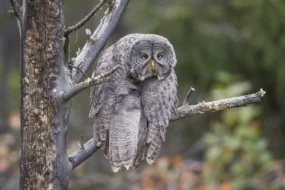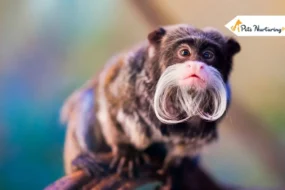
In the world of pets, here’s one more among them you need to know about – the red-eared slider turtle. Like every other animal with different species, the turtle also has and the one I am going to discuss in one of it. I have shared many breed information, but writing this article is making me feel excited more than ever. There are many classic things about the slider turtle with red ears that just made me fall in love with this exo-pet instantly. Let’s see some red-eared slider turtle.
You all know, turtles are among the pets with the highest lifespan. So it is clear that you will have to commit to taking care as long as it lives.
The origin of the subspecies of pond sliders is Mexico around the Mississippi river. They are also native to southeast Colorado, Virginia, and Florida. It doesn’t have that vast history, but it is known as the most traded turtle in the world. Also, it has its name registered under the list of the world’s 100 most invasive species.
Enough of the history, now let’s take a look at its side. Here’s the breed information of this famous turtle species.
Red-Eared Slider Species Overview:
| Name | Red Eared Slider Turtle |
| Scientific Name | Trachemys Scripta Elegans |
| Weight | up to 6.61 pounds |
| Length | up to 12 inches |
| Lifespan | 20 years |
| Personality Traits | Mild Temperament and Friendly |
| Other Known Names | Red-eared terrapin and Water slider turtle |

Physical Appearance of Red-Eared Slider:
How will you know whether it is a red-eared slider or not? Physical appearance will help you out. Here are the physical characteristics of this pet.
- The most common feature is the red spot behind the ear, but not all of them need to have it there. Some have a red spot on its head.
- They are green in color with yellow stripes, making them stand out among all the turtles.
- Males have a long tail and front claws, while females have a longer entire look.
- The length of the carapace of the slider turtle is between 5 to ll inches. Less than 4 inches are illegal to sell and have as well.
- The hatchling of this species has a diameter of 1 inch.
- The color of the shell of the hatchling is green with the pattern of yellow when they mature the color changes to olive green.

The Temperament of Water Slider:
When you are thinking of getting this camouflage colored pet as a family member, it is important to know about its behavior and temperament. So that you can take care of it properly. Know about the sea turtle.
It is that kind of an introverted friend, about whom there’s nothing much to talk about. The description is short but accurately precise. Let’s hop on!
- Don’t ever pet a red-eared turtle, it doesn’t like it. Also, it can bite you if it feels threatened.
- It will take time to get a bond with you, but once you are in its good books, man you will enjoy being with this creature.
- I have heard it can recognize the owner, and if the bond is great it might play with you while you are feeding.
- You might catch a glimpse of it swimming up to you, just to get food, nothing else (haha).
- The most important thing you should know, the first few days after coming to its new home, it may stay in the shell. Don’t worry, it is because of insecurity and shyness, it will get out and greet you as soon as you are providing food.

Diet of Red-Eared Slider:
What should I feed my red-eared slider? The most asked question. A pet owner is going to be concerned about the food to give it. As a pet parent, I can understand how a single mistake in feeding can get your cute little turtle in danger.
Here’s the list of things that you can feed your slider:
- Commercial turtle pellets
- The mixture of both plant and animal-based food. (As they mature the taste and preference of diet changes)
- Dark leafy and sliced vegetables, nontoxic aquatic plants.
- As for treats you can provide them with comet goldfish, earthworms, and insects.
- Most important, clean water. Don’t let it drink chlorine water.
Other than what it should eat, it is also necessary for you to know when to feed them. Juveniles should be fed every day, while for adults feeding every other day is also acceptable.
The interesting fact about the slider turtles, they are carnivores in the juvenile stage and get omnivores or more of herbivores as they mature.

Housing For This Invasive Pet:
Whenever you get a small size pet, taking care of its housing is necessary. You will have to create a suitable and safe environment for it to live in. Red-eared slider turtles can live up to 20 years (or maybe more than that) when bred and held in captivity.
When getting a housing for the red-eared slider, you must replicate the exact natural environment, where they exist – a warm, dry area to bask in, and water for swimming.
So it is clear, either you will have to get the aquarium or the utility tub for its home. The glass aquarium is the best choice for creating the environment it needs. Keep in mind the turtle is going to grow, and as it grows you will need the larger space so that it can roam around freely.
If you don’t want to keep changing and investing in different houses, it is always the best choice to have a bigger aquarium. If you have a single slider go for a 75-gallon aquarium and if there are more than one, you will need an even larger enclosure.
When you get a cage, make sure the basking area and swimming area are within its reach easily. Also, don’t add too much water, it may drown it. They are cold-blooded reptiles, they also need fresh air to survive.
So the enclosure must have fresh air passing through, basking area, food area, and swimming area. The warmth of its house should be maintained at 75 F. If you live in a colder area, an infrared bulb or room heater will do the work of maintaining the heat. You can also go for the heat pad.
No doubt it will work you up while setting up the home sweet home for the turtle, but after you are done its maintenance is not that bad. Make sure you clean the cage in proximity to the feeding day.

Health and Care of Red Eared Slider Turtle:
You read about its physical appearance, personality traits, diet, and even its housing. So it is time you should read about the health issues and caring too. Every animal is prone to certain diseases and these red ears are no less.
- There are chances of having a digestive issue, due to the cold temperature, which can lead to severe problems.
- Quality of water will also affect its health, so make sure you change the dirty water from time to time.
- The most seen disease in red-eared sliders is a metabolic bone disease and vitamin A deficiency.
There are few other diseases that these red-eared babies are prone to such as,
- GI tract parasites (Poor appetite, anal prolapse, listlessness, and possibly diarrhea)
- Eye infection (Swollen eyes and sides of the head)
- Shell rot/ulcers (Discolored or foul-smelling patches or pits on the shell)
- Respiratory infection (open mouth breathing, and sneezing)
All of this will need vet attention. As soon as you see the symptoms of it, get an appointment with the doctor.

Get this Slider Turtle and See How to Live Life to the Fullest:
So this was all you need to know about the red-eared slider turtle. What are you waiting for? Get this cute little shell baby, and have an amazing bonding session. Make sure you don’t let the children carry it. It might fall from hands and that will make serious damage, even its life can get in danger.
The same is for older children, if they can’t handle it properly, it’s better to play with it without touching it.
To get more information:











